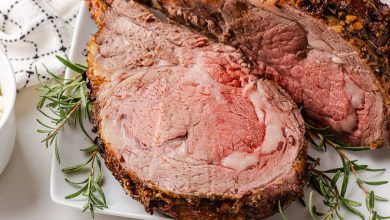Soybean Shortening (Hydrogenated, Heavy Duty, High Linoleic)
This versatile and reliable cooking oil, typically used for frying, is a high-fat, hydrogenated soybean shortening with a substantial content of linoleic acid. It is commonly found in commercial kitchens due to its stability and ability to withstand high cooking temperatures. Below are the key nutritional aspects of this ingredient:
| Nutrient | Amount |
|---|---|
| Energy | 884 kcal |
| Protein | 0.0 g |
| Total Fat | 100.0 g |
| Saturated Fat | 21.1 g |
| Carbohydrates | 0.0 g |
| Fiber | 0.0 g |
| Sugars | 0.0 g |
| Calcium | 0.0 mg |
| Iron | 0.0 mg |
| Magnesium | 0.0 mg |
| Phosphorus | 0.0 mg |
| Potassium | 0.0 mg |
| Sodium | 0.0 mg |
| Zinc | 0.0 mg |
| Copper | 0.0 mcg |
| Manganese | 0.0 mg |
| Selenium | 0.0 mcg |
| Vitamin C | 0.0 mg |
| Thiamin (Vitamin B1) | 0.0 mg |
| Riboflavin (Vitamin B2) | 0.0 mg |
| Niacin (Vitamin B3) | 0.0 mg |
| Vitamin B6 | 0.0 mg |
| Folate | 0.0 mcg |
| Vitamin B12 | 0.0 mcg |
| Vitamin A | 0.0 mcg |
| Vitamin E | 6.13 mg |
| Vitamin D2 | 0.0 mcg |
Allergen Information
This product is derived from soybeans, a common allergen, and may contain trace amounts of soy proteins depending on the refining process. It is important to be cautious if you have a soy allergy.
Dietary Preferences
- Vegetarian-Friendly: Suitable for vegetarian diets.
- Vegan-Friendly: Contains no animal-derived ingredients, making it suitable for vegan diets.
- Gluten-Free: This ingredient is naturally free from gluten, making it safe for those with gluten sensitivities.
Advice
Due to its high saturated fat content, soybean shortening should be used in moderation, particularly if you are mindful of your intake of saturated fats. It is ideal for deep frying and high-heat cooking due to its stability at elevated temperatures, ensuring that the oil remains intact without breaking down. However, consider balancing your cooking fats with other healthier options like olive oil when preparing more delicate dishes.
Conclusion
Soybean shortening is an essential ingredient in the culinary world, especially for deep frying, as it offers stability and high-heat tolerance. While it provides no significant vitamins or minerals, it contributes to achieving the desired crispiness in fried foods. However, like all oils, it should be consumed in moderation within a balanced diet.










